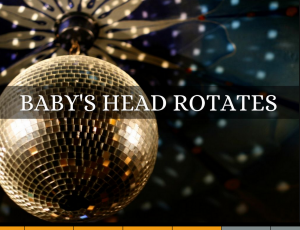Jazz It Up! Using Haiku Deck to Create Snappy Image-Based Presentations
By: Sharon Muza, BS, LCCE, FACCE, CD/BDT(DONA), CLE | 0 Comments
By Jocelyn Alt, CD(ToLabor), MBA
My favorite way to teach is using interactive, engaging activities that get my families building community with each other, interacting with class members, actively partipating rather than passive listening and often up and out of their seats. Sometimes, it does become necessary to use a presentation format to present a topic. Alternately, using such a format can help reinforce one of the activities you are doing in class. Today on Science & Sensibility, CBE and doula Jocelyn Alt shares a tool, Haiku Deck, that she uses to create interesting presentations to use in her childbirth classes. Jocelyn reviews it here and shares some of her recent presentations. - Sharon Muza, Science & Sensibility Community Manager.
Some of my most rewarding moments as a childbirth educator are times when former participants share stories about using skills or information during their births that they learned in class. It might be a squatting position we practiced, the benefits and risks of narcotics as pain relief that we teach using an interactive game, or the BRAIN acronym for making informed decisions (see below if you are unfamiliar with this rubric.) My team of educators and I are always looking for new ways to make our classes more engaging and memorable so that our students will have a higher likelihood of recalling the information when they need it most - during labor.
Haiku Deck - reinforcing learning
It's been known for eons that using images reinforces learning (it's been said so often, the adage is hackneyed: "A picture is worth a thousand words." But it's often true!) So I was excited when I recently found out about a tool that allows you to create beautiful image-based slide presentations in a snap. It's called Haiku Deck. Presentations created with this program can be used in conjunction with interactive activities as an introduction or backdrop, or alongside lecture components of class.
Here is an example of a presentation created with Haiku Deck: Top Five Tips for New Moms. If you click on the deck and view it on the Haiku Deck site, you can also see the notes that accompany each slide. After looking at the presentation, try testing its effectiveness on yourself. How many images do you remember from it? How many of the messages do you remember? How many do you think you would have remembered if you had simply seen them presented as text in a bulleted list?
Here's another Haiku Deck for the acronym BRAIN: Five Essential Questions for Decision-Making in Labor, which I use to teach informed decision making. Each letter of the  acronym stands for a question laboring parents can ask themselves and their care providers when faced with a decision in labor - or at any other time for that matter. One dad said that he found it so useful, he started using it as a decision-making tool at work! The acronym stands for Benefits, Risks, Alternatives, Intuition, and Need Time. Acronyms themselves can help with recall, and reinforcing them with images can make them even more sticky.
acronym stands for a question laboring parents can ask themselves and their care providers when faced with a decision in labor - or at any other time for that matter. One dad said that he found it so useful, he started using it as a decision-making tool at work! The acronym stands for Benefits, Risks, Alternatives, Intuition, and Need Time. Acronyms themselves can help with recall, and reinforcing them with images can make them even more sticky.
What I like about Haiku Deck
Ease of Use - The interface is elegant and simple to use. One great feature is the huge library of images. You just type in a word that relates to your content, and dozens of photos come up for your use. With one click, you can add them to your presentation.
Effectiveness - The structure of Haiku Deck forces you to be concise with your words and use images to communicate much of your message. The result is presentations that connect to people. Many of the most popular slide decks on the large presentation posting site SlideShare were made with Haiku Deck because they draw people in and are memorable.
Accessibility - You can use Haiku Deck to make presentations in a browser on your computer or through the iPad app. Presentations are all backed up on the Haiku Deck site and can be embedded into websites and social media, so you can easily make them available to your participants to reference outside of class.
Just for fun, here's one last Haiku Deck on the Six Signs of Labor Progression.

If you try Haiku Deck in your classes, I'd love to see any presentations you develop. Drop the links in the comments section below and let us know if you found the program easy or difficult to use and a bit about your experience.
Resources
Defetyer, M. A., Russo, R., McPartlin, P. L. (2009). The picture superiority effect in recognition memory: a developmental study using the response signal procedure.Cognitive Development, 24, 265-273. doi: 10.1016/j.cogdev.2009.05.002
Foos, P.W., & Goolkasian, P. (2005). Presentation formats in working memory: The role of attention. Memory & Cognition, 33(3), 499-513.
Shepard, R.N. (1967). Recognition memory for words, sentences, and pictures. Journal of Learning and Verbal Behavior, 6, 156-163.
About Jocelyn Alt
Jocelyn Alt, CD, MBA, is a childbirth educator and birth doula who has been working with expecting and new parents since 2006. Jocelyn is the Founder and Director of Ohana, a birth and parenting services company with locations in Chicago and Seattle that offers childbirth classes, prenatal yoga, doulas, new parent groups, and maternity concierge services. The wordohana means "family" in Hawaiian and refers to one's inner circle of both family and close friends. In addition to helping parents-to-be transition to parenthood, Jocelyn enjoys hiking, cycling, and hosting dinner parties. She lives in Seattle, WA. Reach Jocelyn through her website www.OhanaParents.com.
Published: March 02, 2015
Tags
Childbirth educationProfessional ResourcesDoulasDecision-MakingGuest PostsMeditationImproving teaching skillsMother-baby bonding improvementParent educationchildbirth educatorIntuitionJocelyn Alt